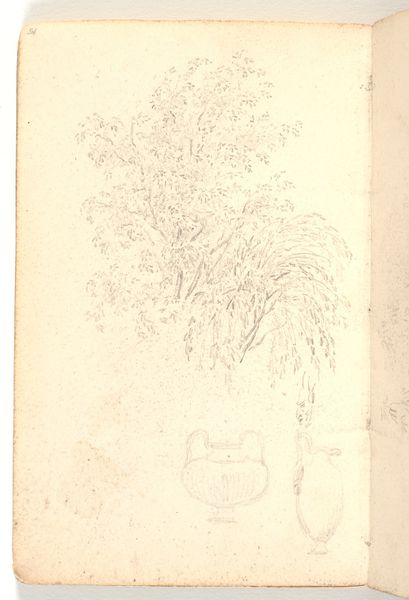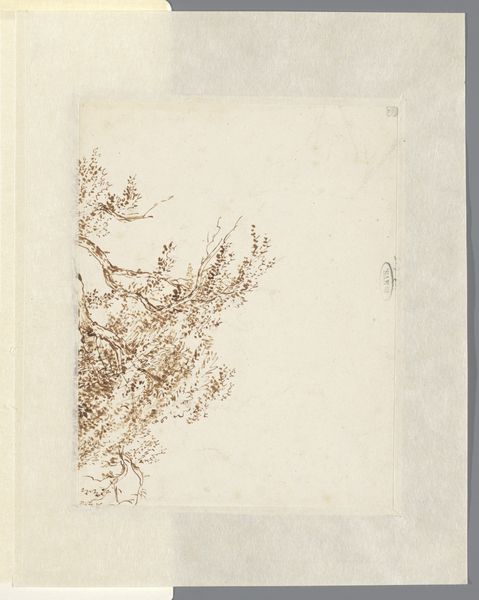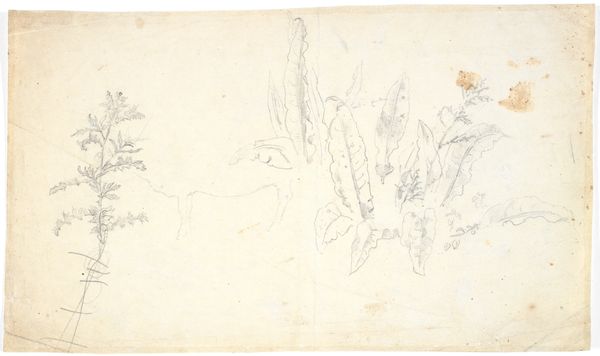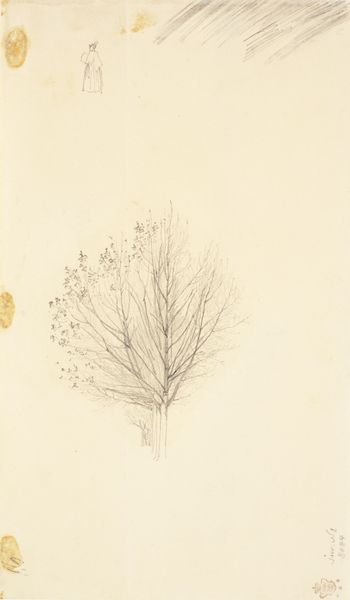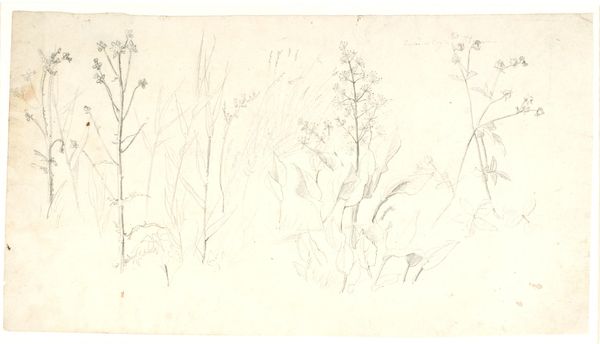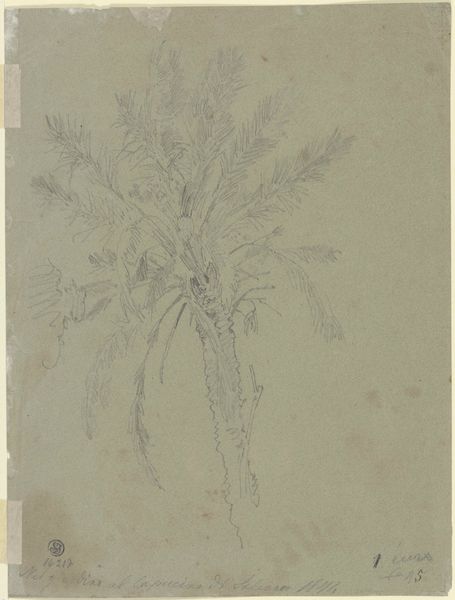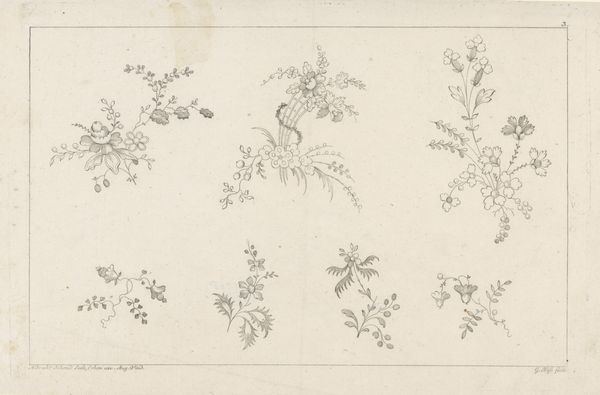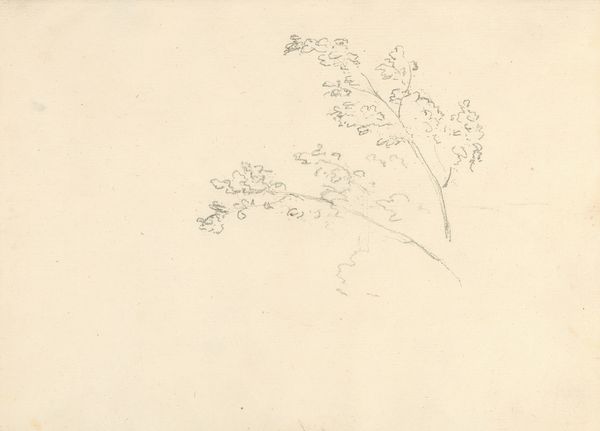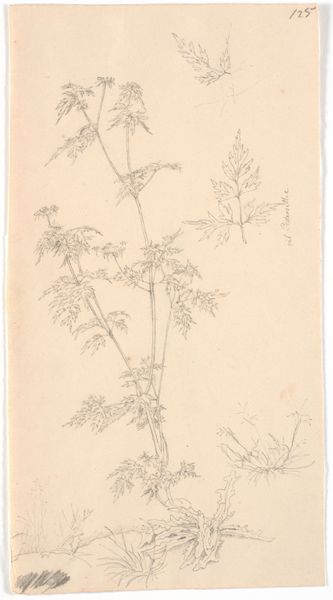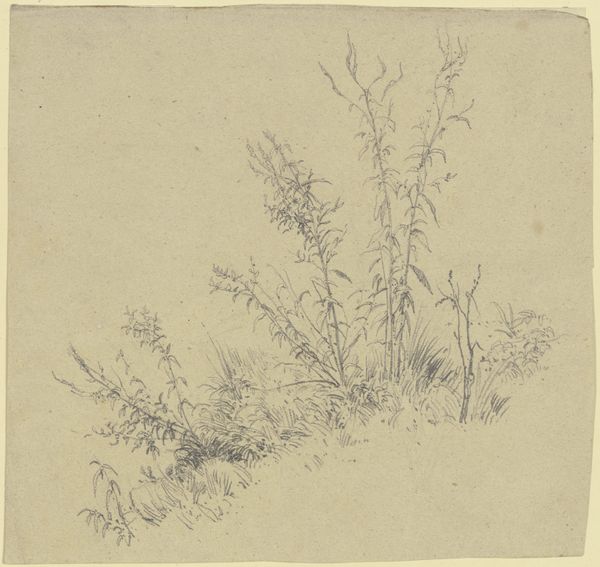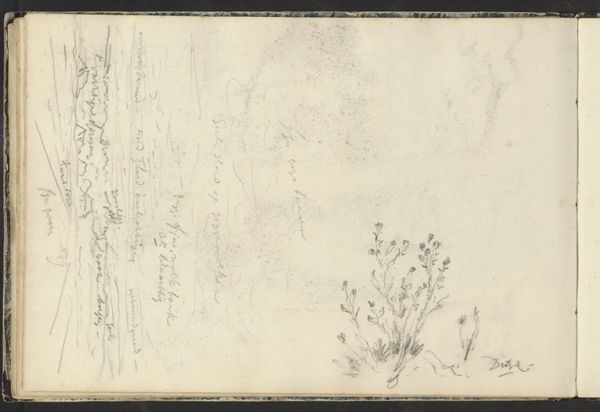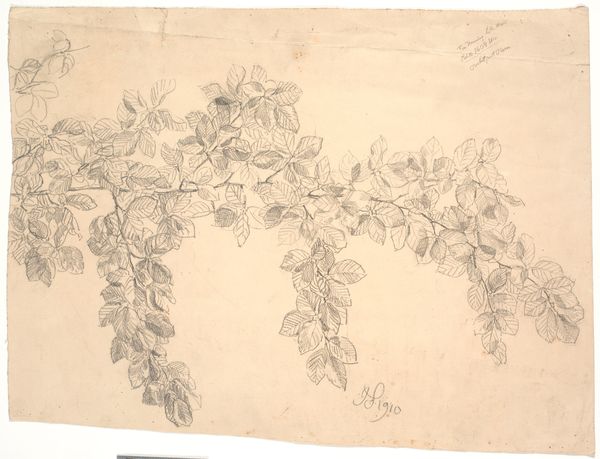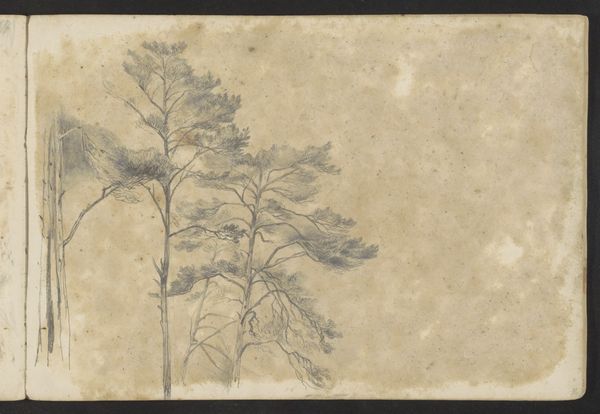
drawing, paper, pencil
#
drawing
#
pen sketch
#
landscape
#
paper
#
romanticism
#
pencil
#
realism
Dimensions: 182 mm (height) x 115 mm (width) (bladmaal)
Curator: Look closely at "Studier af grene" (Studies of Branches) from 1825-26, created by Martinus Rørbye. It's rendered in pencil and pen on paper, a subtle yet detailed work residing here at the SMK. Editor: There's such a delicacy to it. It feels so transient, like a whisper of nature caught on the page before it vanishes. The sparse detail creates an almost ethereal quality, doesn't it? Curator: Absolutely. This drawing provides an insight into Rørbye’s artistic process during a period heavily influenced by the Romantic movement and emerging Realism. His study transcends mere representation; it encapsulates a specific time in the cultural view of landscape, aligning closely with an emerging scientific precision and also a sense of wonder. The branches become an exercise in close observation—not just of form, but of the experience of nature itself. Editor: Do you think Rørbye’s intention was scientific documentation, or an expressive exploration of form? There is such beauty captured through simplicity; the texture implied from minimal lines is evocative. It begs the question, what drives someone to see beauty in such a rudimentary way? Curator: Rørbye occupied this interesting nexus where precise documentation fed directly into artistic feeling. Remember the Romantic period deeply valued emotional connection with nature, but that feeling was increasingly mediated by an impulse toward realistic representation. Therefore, it is safe to assume his artistic expressions served many purposes which intertwined with a collective understanding of art's utility and emotive force within society at that time. Editor: It's lovely how this sketch still communicates something beyond observation, like the very scent of earth or feel of sunlight filtering through the leaves. The act of drawing, in itself, transforms observation into an experience, right? Curator: Exactly. By isolating these studies of branches, Rørbye prompts us to reflect not just on the details, but also on our engagement with art, nature, and what constitutes an individual's relationship to the two at once. Editor: Thinking about the artist’s meticulous process really makes me appreciate it even more. Curator: And isn’t that what art, and museums, are for?
Comments
No comments
Be the first to comment and join the conversation on the ultimate creative platform.
